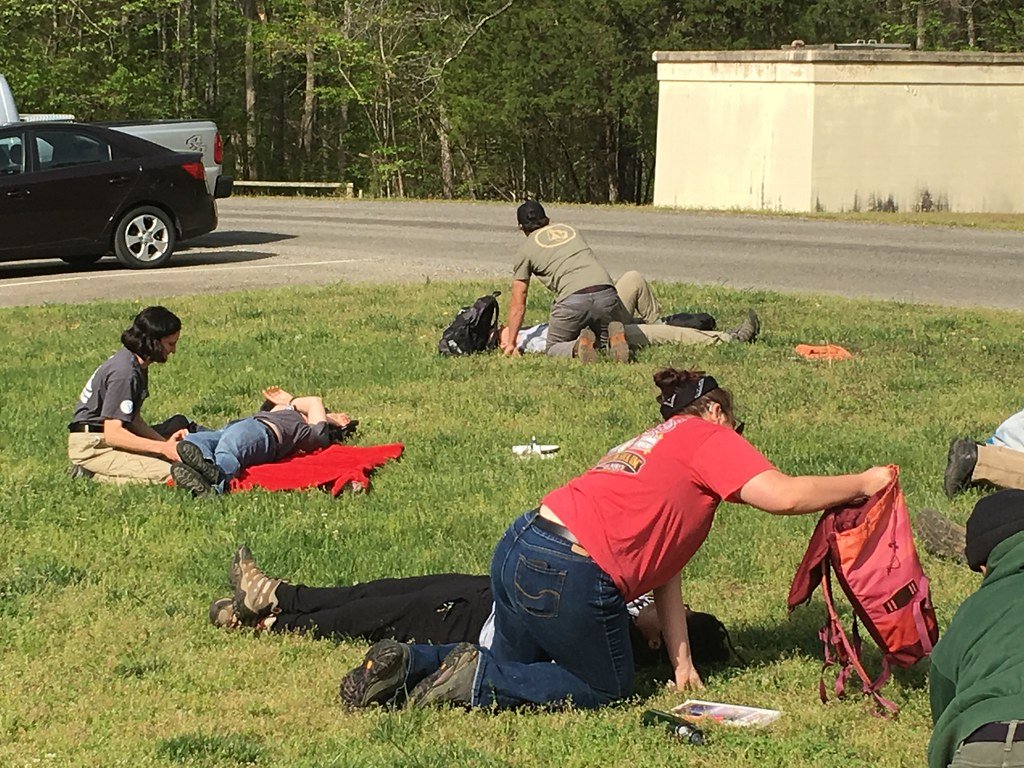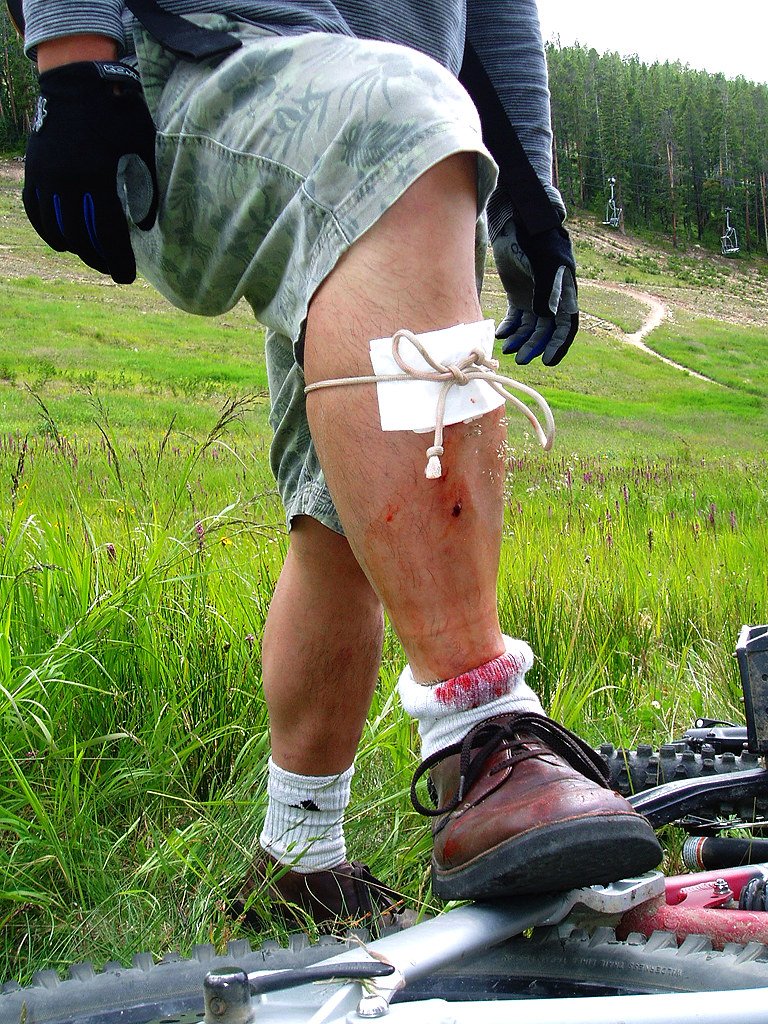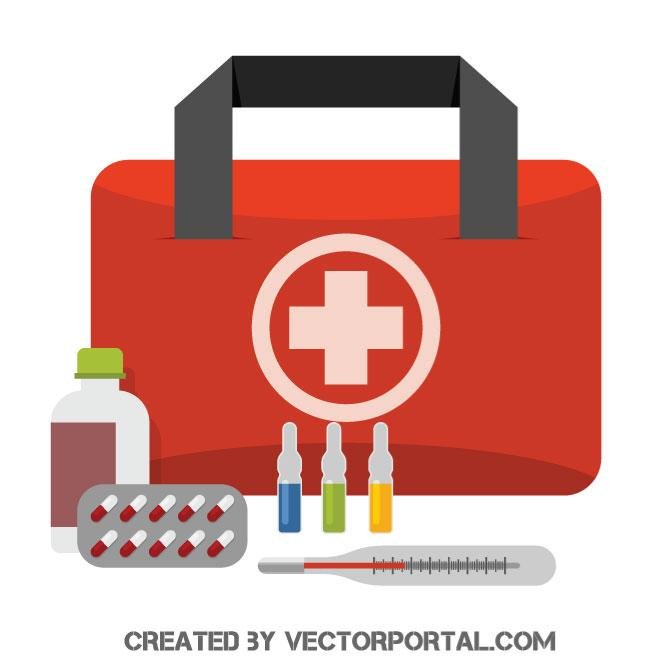In the heart of the untamed wilderness, Mother Nature casts her awe-inspiring spell, immersing us in a realm of breathtaking beauty and unforgiving challenges. As we venture into the great unknown, a pact is signed — one of eternal respect and vigilance, promising us life-altering experiences and, occasionally, perilous encounters. When unforeseen accidents occur amidst the towering trees, rushing rivers, and majestic peaks, the ultimate guide to first aid in the wilderness becomes an indispensable compass, illuminating the path towards safety and survival. Brace yourself for an extraordinary journey of preparedness and resilience, where every twist and turn leads us through the realms of uncharted territory, uncovering the indispensable knowledge that may one day be the bridge between peril and triumph.
Table of Contents
- Preparing for Wilderness First Aid
- Recognizing and Responding to Common Wilderness Injuries
- Essential First Aid Supplies for the Wilderness
- Navigating Medical Emergencies in Remote Locations
- Wilderness First Aid Techniques and Best Practices
- Q&A
- Concluding Remarks

Preparing for Wilderness First Aid
When venturing into the great outdoors, it’s crucial to be prepared for any medical emergencies that may arise. Wilderness First Aid (WFA) is a specialized form of first aid that focuses on treating injuries and illnesses in remote and wilderness settings where professional medical help may be hours or even days away.
To ensure you’re ready to handle any situation, here are some essential steps to take when :
- Research and educate yourself: Familiarize yourself with common wilderness injuries and illnesses, such as fractures, hypothermia, snake bites, and dehydration. Study up on proper techniques for assessment, treatment, and evacuation in wilderness environments.
- Assemble a comprehensive first aid kit: Include essential items like bandages, splints, antiseptic wipes, gauze pads, and a tourniquet. Additionally, remember to pack any personal medications or specific equipment you or your group may require.
- Attend a Wilderness First Aid course: Enroll in a certified WFA course to gain hands-on training from experienced professionals. These courses provide practical knowledge on how to navigate emergencies, improvise equipment, and make the best use of available resources in remote locations.
- Practice your skills: Regularly refresh your first aid skills by conducting scenario-based simulations or practicing with fellow outdoor enthusiasts. This will help build confidence and ensure your skills remain sharp.
Remember, wilderness first aid is all about being prepared for the unexpected. By taking these steps, you’ll equip yourself with the knowledge and resources necessary to handle medical emergencies and keep your adventures in the wild as safe as possible.

Recognizing and Responding to Common Wilderness Injuries
When venturing into the great outdoors, it is essential to have a basic understanding of . While everyone hopes for an adventure filled with thrilling hikes, breathtaking landscapes, and peaceful camping nights, it is important to be prepared for any unexpected mishaps that may arise.
Recognizing Wilderness Injuries:
- Bites and Stings: Be cautious of venomous snakes, spiders, and insects that may pose a threat. Recognize the signs of an allergic reaction to a bite or sting, such as difficulty breathing or severe swelling.
- Fractures and Sprains: Hiking and exploring rugged terrains can lead to falls and twists. Learn to identify the signs of fractures (e.g., deformity, severe pain) and sprains (e.g., swelling, bruising).
- Hypothermia and Heat Exhaustion: Extreme temperatures can be dangerous in the wilderness. Look out for signs of hypothermia (e.g., shivering, confusion) in cold environments and heat exhaustion (e.g., fatigue, dizziness) in hot environments.
- Cuts and Abrasions: Sharp objects and rough surfaces are abundant in nature. Know how to clean and dress wounds to prevent infection.
Responding to Wilderness Injuries:
- Stay calm: In emergency situations, it is important to remain calm and assess the situation before taking action. Panicking may worsen the injury or put others at risk.
- Administer first aid: Depending on the nature of the injury, provide appropriate first aid. This might involve immobilizing fractures, applying pressure to stop bleeding, or providing CPR in severe cases.
- Seek professional help: In serious or life-threatening situations, it’s crucial to call for immediate medical assistance. Having knowledge of the nearest medical facilities or emergency services is vital when venturing into the wilderness.
- Prevent further injuries: Ensure the safety of the injured person and the entire group by securing the area and taking precautions to prevent any additional accidents.
By , you can ensure a safer and more enjoyable outdoor experience. Remember, prevention is always better than cure, so equip yourself with the necessary knowledge and resources before embarking on your wilderness adventure.

Essential First Aid Supplies for the Wilderness
When venturing into the wilderness, it’s crucial to be prepared for any unexpected situations that may arise. Having the right first aid supplies can make all the difference in ensuring your safety and wellbeing. Here are some essential items to include in your wilderness first aid kit:
- Bandages and dressings: These are essential for covering wounds and preventing infection. Make sure to pack a variety of sizes, including adhesive bandages, gauze pads, and adhesive tape.
- Tweezers and scissors: Useful for removing splinters, cutting tape or clothing, and performing small procedures.
- Antiseptic wipes and ointments: To clean wounds and prevent infection. Alcohol swabs, hydrogen peroxide, and antibiotic ointments can come in handy.
- Triangular bandages: These versatile tools can be used as slings, tourniquets, or to create splints.
- Pain relievers and anti-inflammatory medication: Ibuprofen and acetaminophen can help alleviate pain or reduce fever in case of injuries or illness.
- Tweezers and scissors: From removing splinters to cutting tape or clothing, these tools are essential for various situations.
- Emergency blanket: This lightweight, compact item is crucial for regulating body temperature and protecting against hypothermia.
- Personal medications: If you have any pre-existing medical conditions, ensure you include an ample supply of your required medications.
- Emergency contact information: Don’t forget to carry a list of emergency contacts, medical history, and any relevant allergies or conditions.
No adventure is completely free of risk, but by carrying these essential first aid supplies, you’ll be better equipped to handle unexpected situations and provide immediate care in the wilderness.

Navigating Medical Emergencies in Remote Locations
In the midst of the great outdoors, when adventure takes us to remote and secluded locations, it is essential to be prepared for any situation, including medical emergencies. While unexpected accidents and injuries can happen, being equipped with the knowledge and resources to navigate these situations can make all the difference in ensuring the well-being of yourself and others.
1. Stay Calm: In any medical emergency, staying calm is crucial. Panicking can hinder clear thinking and decision-making. Take a deep breath, assess the situation, and focus on the necessary steps to provide aid and seek help. Remember, a calm presence can greatly reassure the patient and those around you.
2. Evaluate the Situation: Before taking any action, assess the severity of the medical emergency. Understand the symptoms and gather information about the patient’s medical history, if possible. This evaluation will help determine the appropriate course of action and aid in relaying crucial details to medical professionals, should help be needed.
3. Activate Emergency Response: In remote locations, access to immediate medical help may be limited. Therefore, it is essential to utilize available resources to ensure swift and effective emergency response. Contact local authorities or emergency services, if available, and clearly communicate the situation and location to expedite rescue efforts.
4. Administer First Aid: While waiting for professional help to arrive, it may be necessary to administer basic first aid. This could include stopping bleeding, stabilizing fractures, or providing CPR if needed. It is crucial to have prior knowledge of basic first aid techniques and carry a well-stocked first aid kit, including essential supplies such as bandages, antiseptics, and pain relievers.
5. Prepare and Plan Ahead: Prevention is key when it comes to remote medical emergencies. Before embarking on any expedition, research and understand the potential risks and hazards of the chosen location. Pack a comprehensive emergency kit tailored to the potential medical needs specific to the destination. Additionally, ensure that all participants are aware of safety protocols and communication methods, including distress signals or satellite phone usage.
By following these guidelines and being well-prepared, anyone venturing into remote locations can have the confidence to navigate and respond to medical emergencies effectively and efficiently. Remember, in the face of adversity, staying calm, evaluating the situation, and taking prompt action can save lives.
Wilderness First Aid Techniques and Best Practices
In the great outdoors, having knowledge of can be crucial in ensuring the safety and wellbeing of yourself and others. Whether you are an avid hiker, camper, or adventure enthusiast, being prepared for emergencies in remote areas is essential. Here are some key techniques and best practices to keep in mind:
- Assess the situation: Before providing medical assistance, it’s important to assess the situation and ensure your own safety. Evaluate the scene for any potential hazards or threats that could further endanger yourself or the patient.
- Manage bleeding: In cases of bleeding wounds, applying direct pressure with a clean cloth or bandage can help control the bleeding. Elevating the injured area and applying a pressure bandage can also be effective.
- Treat fractures and sprains: Immobilizing the injured limb or joint with a splint or makeshift support can minimize further damage and alleviate pain. Ensure the patient remains as comfortable as possible while awaiting professional medical help.
- Know your resources: In wilderness settings, access to immediate medical support may be limited. Familiarize yourself with local emergency services, communication methods, and basic first aid techniques specific to the challenges of the area you are exploring.
- Stay calm and reassure: Above all, maintaining a calm and reassuring demeanor can help the patient remain calm and have a positive impact on their recovery. Stay positive, offer support, and keep communication open throughout the process.
Remember, these techniques and best practices are not a substitute for formal medical training, but they can provide valuable aid in emergency situations until professional help is available. By being prepared and knowledgeable, you can enhance your safety and the safety of those around you in the wilderness.
Q&A
What are the most essential items to include in a wilderness first aid kit?
Some essentials for a wilderness first aid kit include bandages, antiseptic wipes, adhesive tape, gauze pads, tweezers, pain relievers, and emergency blankets.
What are some common injuries or ailments that can be encountered in the wilderness?
Common wilderness injuries include cuts, scrapes, sprains, strains, insect bites, blisters, dehydration, and heat exhaustion.
How can one assess an injured person’s condition in a wilderness setting?
Assess an injured person by checking their responsiveness, breathing, and signs of bleeding. Look for any obvious fractures or dislocations, and assess their pain levels.
Can you provide some tips for cleaning and dressing wounds in a wilderness emergency?
To clean a wound, use clean water, antiseptic wipes, or iodine solution, if available. Use sterile gauze pads and adhesive tape to dress the wound, ensuring it is sealed from dirt and germs.
What are some important considerations for treating snake bites in the wilderness?
When treating snake bites, limit movement of the affected limb below the heart, remove restricting clothing or jewelry, and seek medical help as soon as possible. Do not apply a tourniquet or suck the venom out.
How can you prevent infections in the wilderness?
Prevent infections by cleaning wounds thoroughly, covering them with sterile dressings, and changing dressings regularly. Avoid swimming in stagnant water or using contaminated water sources for cleaning wounds.
What precautions should be taken to prevent hypothermia in a wilderness situation?
Prevent hypothermia by wearing appropriate clothing layers, keeping dry, and staying sheltered from wind and wet conditions. Learn how to build a fire and insulate your body from the cold ground.
What are some methods for ensuring clean drinking water in the wilderness?
Boiling water for at least one minute, using water purification tablets, or employing a portable water filter are effective methods for obtaining clean drinking water in the wilderness.
What should one do if they encounter a wild animal in the wilderness?
If encountering a wild animal, maintain a calm demeanor, speak calmly, back away slowly, and never turn your back on the animal. If attacked, fight back with whatever means necessary to protect yourself.
What additional training or certifications are recommended for wilderness first aid?
Additional training, such as wilderness first aid courses or certifications like Wilderness First Responder (WFR), can provide more in-depth knowledge and skills necessary for handling emergency situations in the wilderness.
Concluding Remarks
As the final embers of your roaring campfire flicker and dance beneath the inky curtain of the night sky, your mind is filled with the knowledge and confidence that can only arise from mastering the art of wilderness first aid. You have traversed the untamed landscapes, armed not only with a compass and a fearless spirit, but also armed with the sacred knowledge of how to heal, how to soothe, and how to save lives.
In this ultimate guide to first aid in the wilderness, we have journeyed together through an intricate web of wisdom and expertise, exploring the precarious balance between danger and safety that nature so effortlessly treads. We have delved into the depths of knowledge, unearthing the secrets of treating bites, stings, and wounds inflicted by the wild inhabitants of these untamed realms.
From the towering peaks of rugged mountains to the sprawling majesty of dense forests, we have uncovered the art of wilderness first aid, breathing life into the seemingly lifeless, and resurrecting hope in the face of darkest despair. We have learned the ways of the land, and armed ourselves with the mystical arsenal of skills necessary to navigate treacherous terrains, armed with nothing but our wits and an unyielding determination to protect the well-being of ourselves and those who decry the call of the wild.
But the journey does not end here. As your fingers delicately carve the final lines into the story of your wilderness adventures, remember that first aid is not merely a collection of techniques, but a profound responsibility to care for the fragile lives around us. Whether these lives belong to four-legged creatures or fellow wanderers, it is our duty to act, to mend, and to comfort.
The wilderness shall forever remain untamed and unpredictable, its temperament ever-changing and fickle. But armed with the knowledge and skills you now possess, you hold the power to defy the odds, to rewrite the stories of those who have fallen victim to the wild’s unforgiving grip. Each day brings forth a new opportunity to learn, to grow, and to become the unwavering champion of first aid in the wilderness.
So as you leave your mark on the sacred domain of nature’s playground, let the spirit of compassion guide your footsteps, and let the flame of knowledge burn bright within your heart. May you forever find solace in the remarkable union of human resilience and the untamed wild, knowing that your journey into the depths of first aid in the wilderness has equipped you with the power to heal, the power to endure, and the power to save lives amidst the vast expanse of nature’s untamed beauty.
As an affiliate, my content may feature links to products I personally use and recommend. By taking action, like subscribing or making a purchase, you’ll be supporting my work and fueling my taco cravings at the same time. Win-win, right?
Want to read more? Check out our Affiliate Disclosure page.